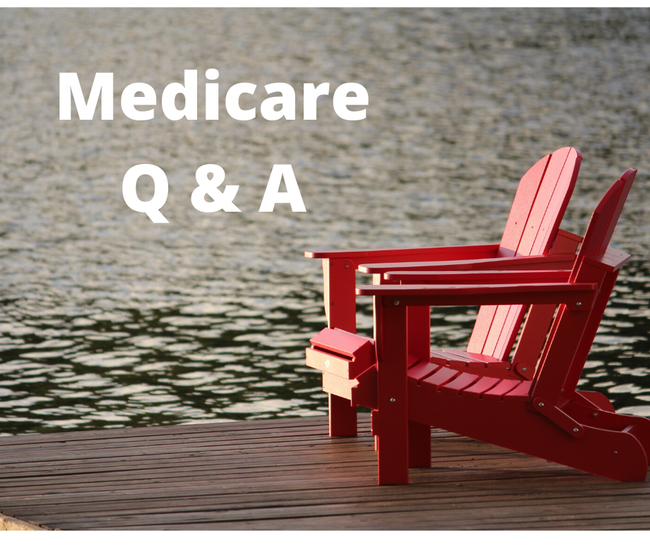
When he turned 65 five years ago, the Salem resident enrolled in Medicare and in a Medicare supplement (Medigap) Plan F insurance policy. He was happy with both except for the rising Medigap premiums. He made an appointment with a Senior Health Insurance Benefits Assistance (SHIBA) counselor to see if he could save money.
The Medicare beneficiary was paying about $213 a month for the insurance. Logging on to a password-protected website, the SHIBA counselor found he could obtain the same insurance coverage for about $187 a month, or about $26 less.
But the individual could save even more. The SHIBA counselor looked at Medigap Plan G coverage, instead, where the monthly premium for a 70-year-old male would be about $133, for a 12-month savings exceeding $960 from his current policy. The only difference between the beneficiary’s existing Plan F policy and the lower-cost Plan G is that he would have to pay the Medicare Part B annual deductible, which is $231 this year. So his net savings would be the $960 savings in insurance premiums minus having to pay the $231 Part B deductible, or $729 savings over 12 months.
If you would like to make a SHIBA appointment, or to ask a question to be answered here, please see the end of this column.
I have one of those no-premium Medicare insurance plans. I’m happy with it. But would I be even happier if I were instead paying, say, $100 a month?
You are asking about Medicare Advantage insurance. The answer will depend on such things as your financial circumstances, the extent to which you are willing to self-insure and your expected need for medical care. To answer your question, try making a grid of medical costs for different insurance plans.
Here, we’ll sketch examples for three insurance companies to compare the cost of the no-premium plan against the plan whose premium is closest to $100. (To prevent inferences of endorsement or criticism, the companies are not named.)
Insurance company A: This compares the no-premium plan to the one costing $75 a month. The insured who pays no premium has a $4,600 ceiling on out-of-pocket costs for medical, compared with $3,900 for the $75-a-month plan. To see a specialist the co-pays are $40 for the no-premium plan, $20 for the $75 plan. Costs for an emergency room visit are identical. In-patient hospitalization costs $400 daily for days 1-5 versus $325 daily for days 1-6. For temporary skilled nursing care, the no-premium plan has a daily co-pay of $184 for days 21-45 compared with $125 for days 21-100 with the $75 plan. For the $900 difference in annual premium, choosing the zero-premium plan is a defensible decision.
Insurance company B: This compares the no-premium plan with one costing $127 a month. The ceilings for out-of-pocket medical costs are $5,600 (no premium) and $3,000 ($127 premium). Co-pays to see a specialist are $45 and $25. The emergency room co-pay is an anomaly: $90 for the zero-premium plan, $120 for the $127 plan. In-patient hospitalization costs for each of the first six days are $335 versus $220. The cost difference for temporary skilled nursing care is dramatic: $150 a day for days 21-100 with the no-premium plan versus $0 co-pay with the $127 plan. A person accustomed to or expecting major medical expenses, and who could afford the premium, would most likely choose the $127 plan.
Insurance company C: This compares the no-premium plan with one costing $92 a month. The ceilings for out-of-pocket medical costs are $5,500 (no premium) and $4,500 ($92 premium). Co-pays to see a specialist are $40 and $30. Costs for an emergency room visit are $90 in both plans. In-patient hospitalization costs are $450 a day for days 1-4 in the no-premium plan, $300 a day for days 1-6 in the $92 plan. For temporary skilled nursing care, for days 21-100 the no-premium plan has a daily co-pay of $184 versus $160 a day for the $92 plan. Given that the difference in annual premium exceeds the difference in out-of-pocket ceiling, a case could be made for the no-premium plan.
Using the Medicare website, it’s also critical to see if the plans differ in your cost for prescription drugs. But doing a grid for medical costs makes sense so one may also consider other co-pays such as outpatient hospital, urgent care, ground ambulance, diagnostic radiology and such. Before enrolling in Medicare insurance, be sure to check that your doctor(s) accept that insurance.
You could pursue this by going on the Medicare website, working with a SHIBA counselor or engaging an insurance broker.
Jim Sellers of Salem is a certified Medicare counselor with the Senior Health Insurance Benefits Assistance (SHIBA) program. To ask a question to be answered in this column, e-mail [email protected]. To schedule a free SHIBA phone appointment with a volunteer Medicare counselor, call 800-722-4134.
STORY TIP OR IDEA? Send an email to Salem Reporter’s news team: [email protected].
JUST THE FACTS, FOR SALEM – We report on your community with care and depth, fairness and accuracy. Get local news that matters to you. Subscribe to Salem Reporter starting at $5 a month. Click I want to subscribe!









